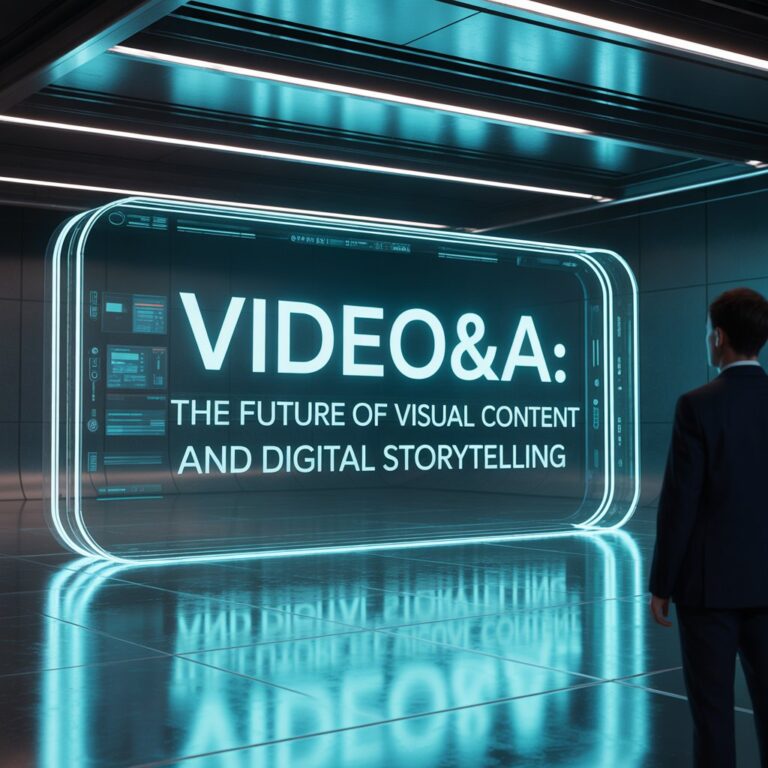In today’s fast-paced digital world, video&a has emerged as a powerful tool for communication, marketing, entertainment, and education. The demand for engaging and interactive video content is higher than ever, as audiences prefer visuals over text-heavy content. With video&a, brands, educators, and creators can deliver their messages more effectively, capturing attention in ways that traditional methods simply cannot. This article explores what video&a means, its benefits, its applications across industries, and why it is becoming a cornerstone of modern digital interaction.
What is Video&A?
The term video&a represents the integration of video content with interaction, analysis, and adaptability. Unlike traditional video formats, video&a is more than just watching—it’s about engaging with the audience, analyzing their response, and creating adaptive strategies based on data. This makes video&a a game-changer in industries like marketing, education, entertainment, and even corporate communication. It bridges the gap between creators and audiences, offering a dynamic way to share information and experiences.
Benefits of Video&A in Modern Communication
One of the biggest advantages of video&a is its ability to capture attention quickly. Studies show that video content is more engaging than text or static images, making it the ideal medium for today’s short attention spans. Businesses benefit from using video&a in advertising campaigns because it boosts engagement and increases conversions. Educators use it to create interactive learning experiences that help students absorb knowledge more effectively. For content creators, video&a provides flexibility to tell stories, share tutorials, or entertain while connecting with audiences on a personal level.
Applications of Video&A Across Industries
Video&a is widely used in multiple industries because of its adaptability. In marketing, it helps brands promote products with engaging storytelling and measurable audience feedback. In education, video&a creates interactive lessons that go beyond textbooks and encourage active learning. In corporate training, companies use video&a to onboard employees more effectively. The entertainment industry has also embraced video&a, offering audiences immersive experiences through live streams, interactive shows, and video-based apps. The versatility of video&a ensures it will continue to grow across different fields.
Video&A Trends in 2025 and Beyond
As technology evolves, video&a is moving toward even greater interactivity and personalization. Artificial intelligence (AI) is now being integrated to analyze audience behavior and recommend tailored video content. Augmented reality (AR) and virtual reality (VR) are transforming video&a into immersive experiences where audiences feel part of the story. Social media platforms are also driving video&a trends by encouraging short-form, engaging clips that keep viewers hooked. These developments highlight how video&a is shaping the future of digital engagement and storytelling.
Why Video&A is Essential for Content Creators and Brands
The reason video&a has become so essential is simple: audiences expect more. Static content no longer generates the same level of interest, while video combined with interaction creates deeper connections. Brands that adopt video&a build stronger trust with customers, while influencers and content creators gain more loyal followers. For professionals, video&a is not just a trend—it is a necessity to remain relevant in an increasingly visual and competitive world.
Conclusion – The Growing Importance of Video&A
In conclusion, video&a is transforming the way we communicate, educate, and entertain. Its unique ability to combine visual impact with interactivity and analysis makes it far more powerful than traditional video formats. Whether you are a brand aiming to boost visibility, a teacher striving for better engagement, or a creator looking to grow your audience, video&a is the future. As technology continues to advance, video&a will remain a vital tool for building stronger connections and delivering impactful experiences in the digital age.
Frequently Asked Questions (FAQ) about Video&A
Q1: What does video&a mean?
A: Video&a refers to video content enhanced with interaction, analysis, and adaptability, making it more engaging and effective.
Q2: How is video&a different from traditional video?
A: Unlike traditional video, video&a focuses on audience interaction, data analysis, and adaptive strategies for maximum impact.
Q3: Where can video&a be used?
A: It can be used in marketing, education, entertainment, social media, and business communication.
Q4: Why is video&a popular in marketing?
A: Video&a helps brands tell stories, capture attention, and measure engagement, which boosts sales and customer loyalty.
Q5: What are the future trends of video&a?
A: Future trends include AI-driven personalization, AR and VR experiences, and more interactive video formats.
